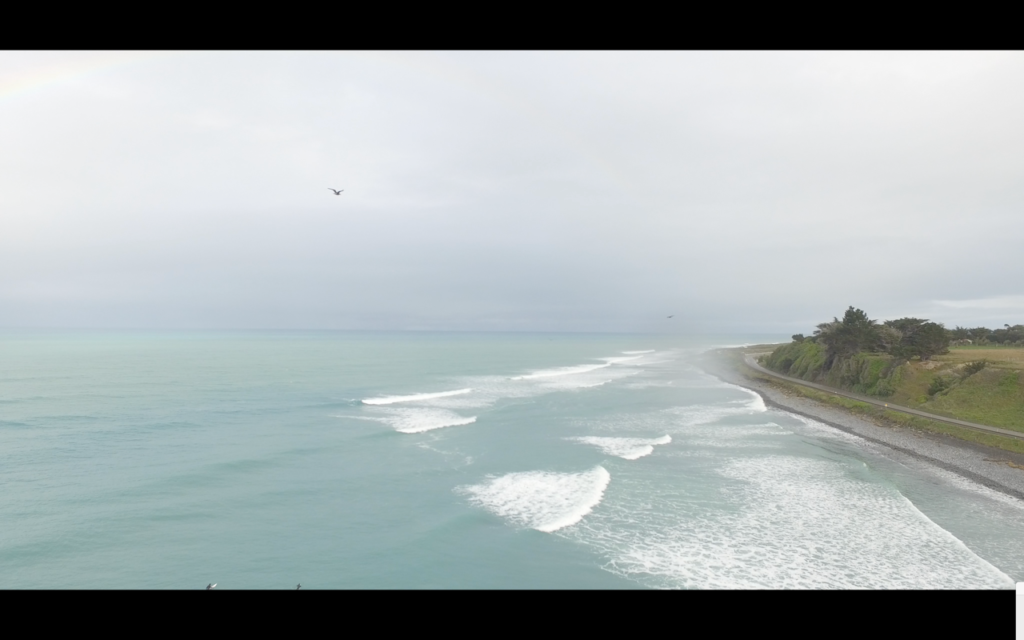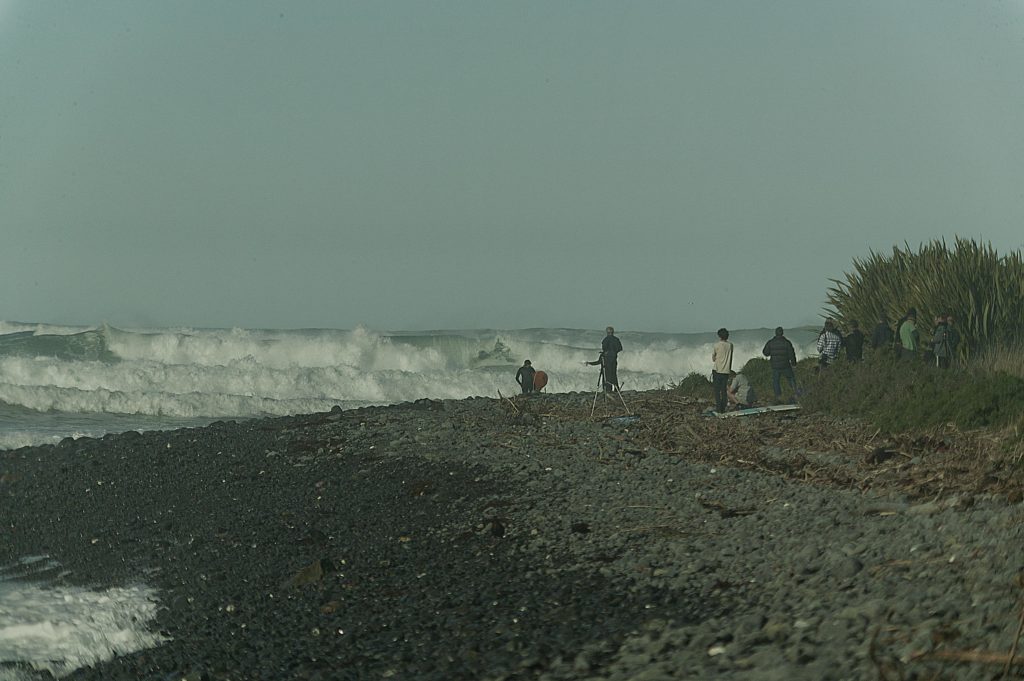Media Release: Consents To Destroy Mangamaunu Surf Break Granted
Kaikoura District Council and Ecan approve consents to destroy the Mangamaunu surf break and remove the community’s democratic rights
A cycle way is to be built on the foreshore along with a new car park with preference by KDC & Ecan over a nationally significant surf break, denying the democratic rights of the community to be involved in any new development of the pristine north coast of Kaikoura.
At a council meeting held on the 28th March 2018, packed with local surfers and supporters who were against the destruction of the Mangamaunu surf break, SPS representatives asked for council to act with integrity in their decision making. Unfortunately the call went unheeded by KDC with the consents approved a day later without any protection to the Mangamaunu surf break or the bay.
SPS has responded by setting up a givealittle page to receive contributions for a legal challenge

In 2017, NCTIR experienced national controversy for treating Mangamaunu as a cheap and easy place to dump earthquake spill. Their original plan was to dump 8-9 metres high and a kilometre down the bay. When this plan was met with intense resistance throughout the local, national and international surfing and environmental protection communites, NCTIR decreased their dumping footprint and then put in a non notifiable consent under the Order in Council (OIC), utilsing the emergency legislation for the first consent for the cycleway. They have since referred to their second consent as an amendment as the cycleway was originally consented in 2017 via the OIC in 3 days without public notification.
In 2018 the second consent was submitted as an amendment under the Order In Council and emergency legislation on the 8th March, this time by NZTA & Kiwirail (both government agencies a part of NCTIR) and only 3 weeks prior to the emergency legislation lapsing and where they would have to go back to a full RMA process for any development or cycleway.
The Surfbreak Protection Society takes issue with both consents going in under the mis-use of legislation designed to “reopen the road” and for “restoration work” where the road is open and the building of a cycleway is a new development and in no way restoration work.
SPS spokesperson indicates “We are not against a cycleway per se, we’re just against a cycleway being built around the point and alongside the surfbreak, in the foreshore and coastal hazard zone.”
For the latest consent amendment, comments were asked for from 4 groups – Mangamaunu Marae, The Kaikoura Boardriders, The Mangamaunu Preservation Society and the Surfbreak Protection Society. All four groups in addition to Te Runanga O Kaikoura were against the mis-use of emergency legislation through the Order in Council process to push through the development and all requested that NCTIR/Kiwirail/NZTA put the proposed development in the consent into a full RMA process. Disappointingly KDC ignored all of these parties and ignored the request to remove the Mangamaunu component of the consent.
The mis-use of legislation is one of core grounds that SPS, MPS and Mangamaunu marae have requested Ministers to call in both consents.
KDC and staff privvy to NCTIR’s acknowledged mis-use of legislation
Serious concern was raised that the council and council staff were fully cognisant that at the KDC Recovery meeting (14th March 2018 – urgent business NCTIR) Mayor and Chair of the Kaikoura Cycle Club Winston Gray had asked NCTIR if there would be any “showstopper” to the cycleway or any way it could be taken “higher”, NCTIR’s Environment officer Manea Sweeney acknowledged that part of the use of the Order in Council was to remove the power to challenge.
“Mayor Gray: So, the other thing is that, obviously, its prompting some comments from the surfing fraternity as you know and it’s a national, two national surf breaks there – that issue about wave action etc – is that – the, the works – is that something that could – is that a like – is that a show stopper? Any of that work could – if that went to – could that go to a higher level?
Manea Sweeney: Through the legislation, ahh no – umm, in terms of the ability for that to be challenged , when yes – that was a part of a reason of the OIC to expedite works was to remove that power…”
The SPS indicated that all councillors and council staff that were at the meeting of the 14th March were in full knowledge that the use of the OIC was remove the power to challenge the plans and decision and therefore the inappropriate removal of democracy and community voice. As officials elected by the Kaikoura community, councillors should be supporting community input not knowingly support measures that sideline the community and destroy local taonga.
Expedited process underscores a lack of information and knowledge
The lack of knowledge and time elected officials had to understand the issues at Mangamaunu is highlighted in the transcript where Councillor Milton was of the view there was “no surf break there anymore” and a new surfbreak has been formed “so, they’ve (sic surfers) got something else to go to”.
Councillor Harnett said “I mean it’s difficult cos we’re not really in the know I mean – it sounds and looks good to me” and went on to say “we will get challenged on it, no doubt, at some stage and so, it would be good even having – umm , you say that you’ve got a coastal expert assessing it and having some of that detail will help us. NCTIR’s Manea Sweeney replied “Sure, yep, yep.” thus indicating councillors are looking to the consent applicant’s experts for responses to any challenge from the community.
Kaikoura District Mayor and councillors seriously conflicted
In February 2017 just three months after the earthquake, Mayor Gray and the Mayors of Marlborough, and Hurunui approached the Kaikoura Member of Parliament, National Party member Stuart Smith to use the limited window of opportunity to include a pacific cycleway within the rebuild. Member of parliament for Kaikoura, Stuart Smith took this straight to National’s Transport Minister Simon Bridges, to be included in the State highway rebuild. There was no notification to the general public, nor any right of appeal. Seemingly the original decisionmaking on including the cycleway was made in a vacuum that smacks of cronyism and collusion.
At the council meeting of the 14th March Mayor Gray indicated “So, Council need to make a decision – do we or don’t we comment – certainly though there’s been a stakeholder commented that the Mayor is actually conflicted because I promote cycling that I promote (?). So they – that’s just one, that was just one.
Councillor Howden: We could all be conflicted because the cycleway is the best thing ever so for me as well.”
The lack of critical assessment and bias was also evident through other comments such as;
“Mayor Gray “as a Council then we could – we could submit – obviously we don’t want particularly… something to stop that – well the amount of investment that’s gone in the cycleway… “ to which Councillor Howdon replies “Well it can’t”.
At the council meeting the day prior to the consent decision Mayor Gray saw fit to joke that “surfing is a notifiable disease” on three occasions.
Ecan’s Disappointing consent conditions
Although the Minister of Conservation had indicated that the consent should include the condition “to avoid adverse effects”, Ecan staff have massaged the wording to “avoid adverse effects… where practicable”, thus rendering the words ineffective to protect the bay. ECan gives preference to the cycleway construction over the surf break at Mangamaunu, where both NZTA & Kiwirail and our own evidence indicate it will destroy the surf break.

Initially the consents were described as to: enable greater room alongside the road and rail corridor to provide amenity and safety improvements, and enhance access and safety to the surf break.
NCTIR/Kiwirail/NZTA’s Everchanging Rationale
NCTIR /NZTA/Kiwirail’s own rationale keeps changing and they are now stating the works are to “build future resilience” to a stretch of road that was not affected by slips and is now higher than before the earthquake. This uplift by nature has already provided any future resilience for the next 100 years, and also nullifying their rationale completely. Clearly there is no place for these works under emergency earthquake legislation.
Seventeen surf breaks are listed as Outstanding Natural Features(ONF’s) in the NZCPS, Mangamaunu was one.
A great deal has been made lately of a track carved out of Te Mata peak in Hawkes Bay, and with a little time and money, this ONF can be restored.
In the case of Mangamaunu, once the extensive rock revetment is imposed along the foreshore of Mangamaunu Point, there is no going back. The surf break dependant on sensitive foreshore and seabed contours, will be lost for ever. The consent has just been signed off under emergency earthquake legislation to allow this to happen.
The emergency legislation is unique in that it prioritises the cycleway over Outstanding Natural Features and Outstanding Natural Character for the purposes re-establishing State Highway one and the main trunk line where needed along the coastline from Kaikoura to Clarence. The emergency legislation wholly circumvents the Resource Management Act (RMA).
Due to the inclusion of the added cycleway development through the decisionmaking and political influence of effectively 5 people (Mayor Winston Gray, Marlborough and Hurunui Mayors and the MP’s Stuart Smith & Simon Bridges), into the work to open the road, a number of state highway/ trunk line adjustments were required along the coastal highway that are generally referred to as building in “future resilience” in the consent documents.
The original letter from Environment Canterbury on March 15th to the Surfbreak Protection Society (SPS) and other affected parties stated that the reason for the revetment so close to Mean High Water Springs (MHWS) at Mangamaunu was;
Ongoing design refinement of the recovery work has led to the need to make amendments to the existing consent footprint at three locations along the coastal route…
Mangamaunu: to enable greater room alongside the road and rail corridor to provide amenity and safety improvements, and enhance access and safety to the surf break.

Since the letter of 15th of March and pressure from the local community and SPS that line from NCTIR has changed to become to “improve future resilience.”
What was offered under the emergency legislation was the right of some stakeholders (the local Iwi, resident landowners, the Minister of Conservation, The Mangamaunu Preservation Society, The Surfbreak Protection Society and some others, to provide comments.
There was general concern regarding a lack of respect on this nationally significant area, Ngai Tahu and the local marae are concerned of impacts to the Mauri of the area, and impacts on kai moana. The Minister of Conservation insisted that the consents Avoid impacts on the nationally significant surf breaks at Mangamaunu (the Mangamaunu and Meatworks surf breaks).
It is the view of SPS that bulldozers on the beach at Mangamaunu to provide for construction works, ongoing maintenance, use and occupation of the coastal marine area for permanent structures, cannot avoid adverse impacts on the Mangamaunu surf break.
Where to from here
The Surfbeak Protection Society and Mangamaunu Preservation Society are still waiting to hear back from the Ministers where they have asked Ministers call in the two consents and to put through any cycleway development within the safety and responsibilty of a full RMA process. SPS have also set up a petition which is sitting on 3371 signatures and gaining.
However, if the Ministers do not do the right thing by the environment and the people, SPS and MPS will not resile so we will look at legal action. We will be soon setting up a give a little page to support our legal costs. We also have many supporters wanting to undertake direct action and we would support this fully if pushed into it.
SPS are hoping the Minister’s see sense and support their government representatives in the community to utilise the correct process for such a development.
SPS spokesperson said “If the cycleway is such a well thought out and great idea, why are NCTIR/Kiwirail and NZTA intentionally avoiding going through a full RMA process which allows national safeguards to stand, thorough assessments to be undertaken and the voice of community to be heard.
The new development of the cycleway is okay in concept but its location and extent will have new adverse effects on the environment and cannot be considered part of the restoration.The decision to progress it under the emergency legislation smacks of short term expediency and will end in the destruction of a national treasure. More careful consideration is needed for sound and legitimate decision-making on matters that may have long term consequences for nationally protected surfbreaks.”
ENDS
The Surfbreak Protection Society has set up a Givealittle page to accept donations to seek legal challenge to these consents please help us save your national treasure, Mangamaunu
Large swell events will connect with the toe of the soon to be constructed seawall, and while the sediment will move back and forth naturally, the seawall will not, creating scour at its base, and dis configuring the natural contour of the beach.

https://www.newsroom.co.nz/@news/2018/04/04/102482/top-surfing-break-under-threat

